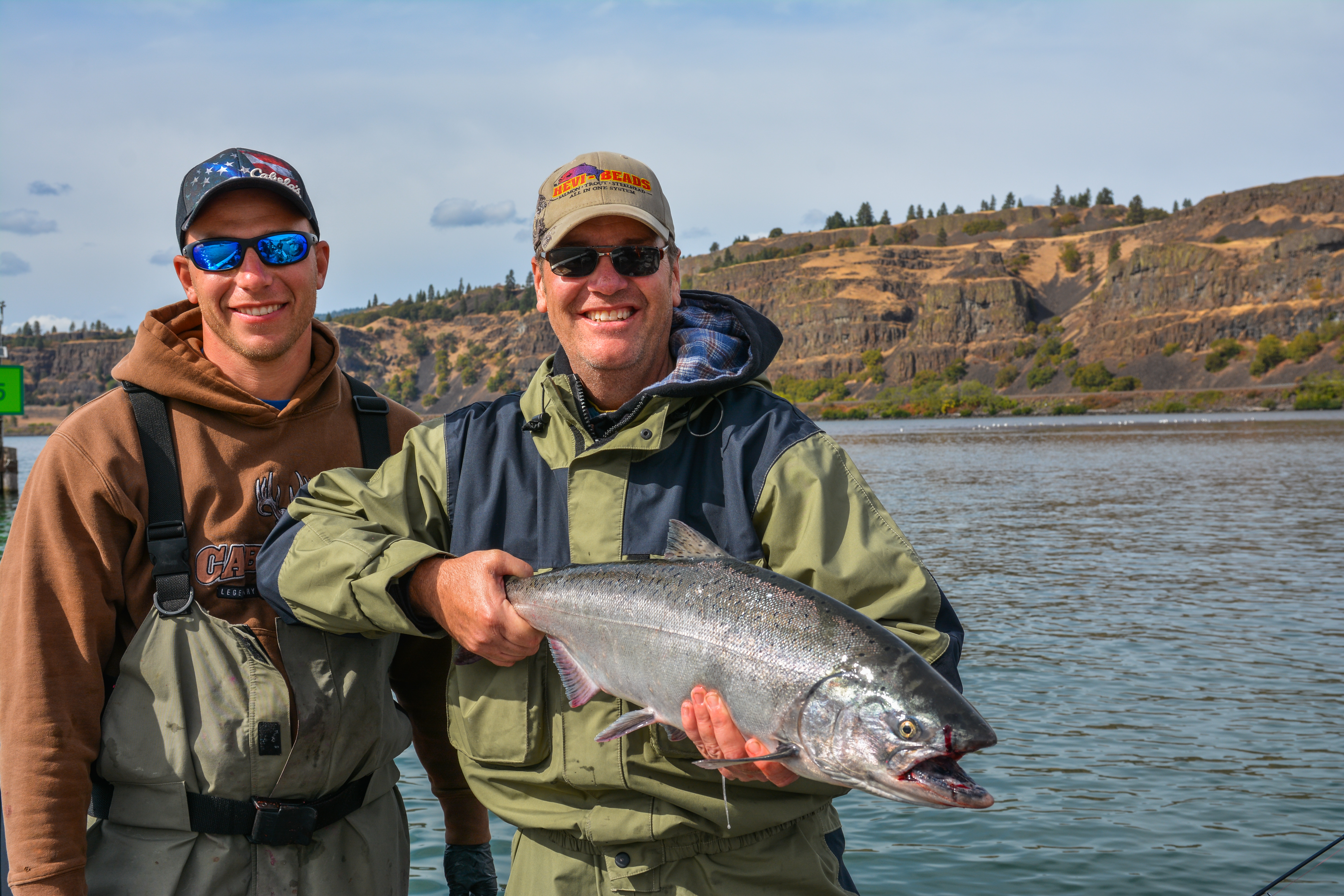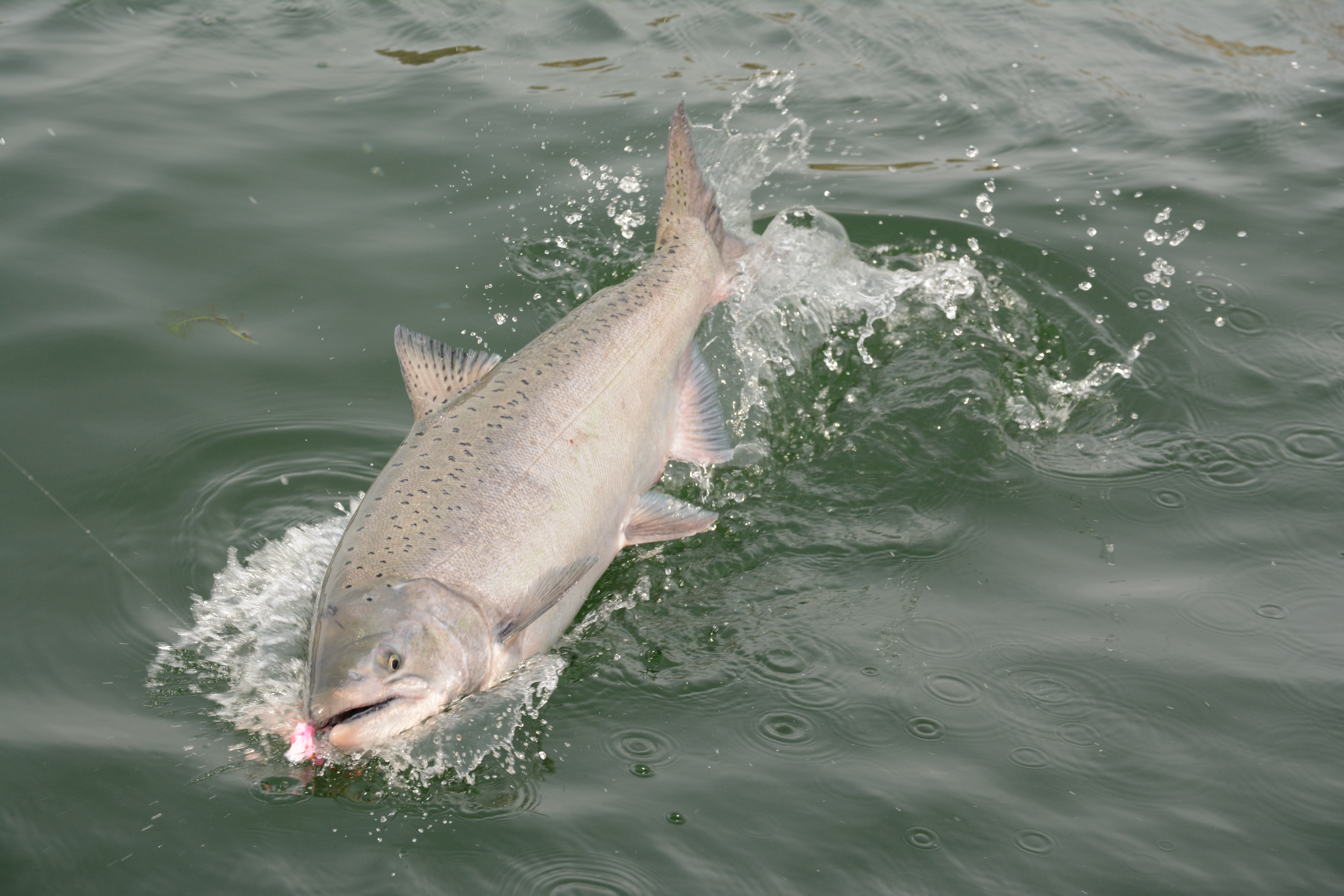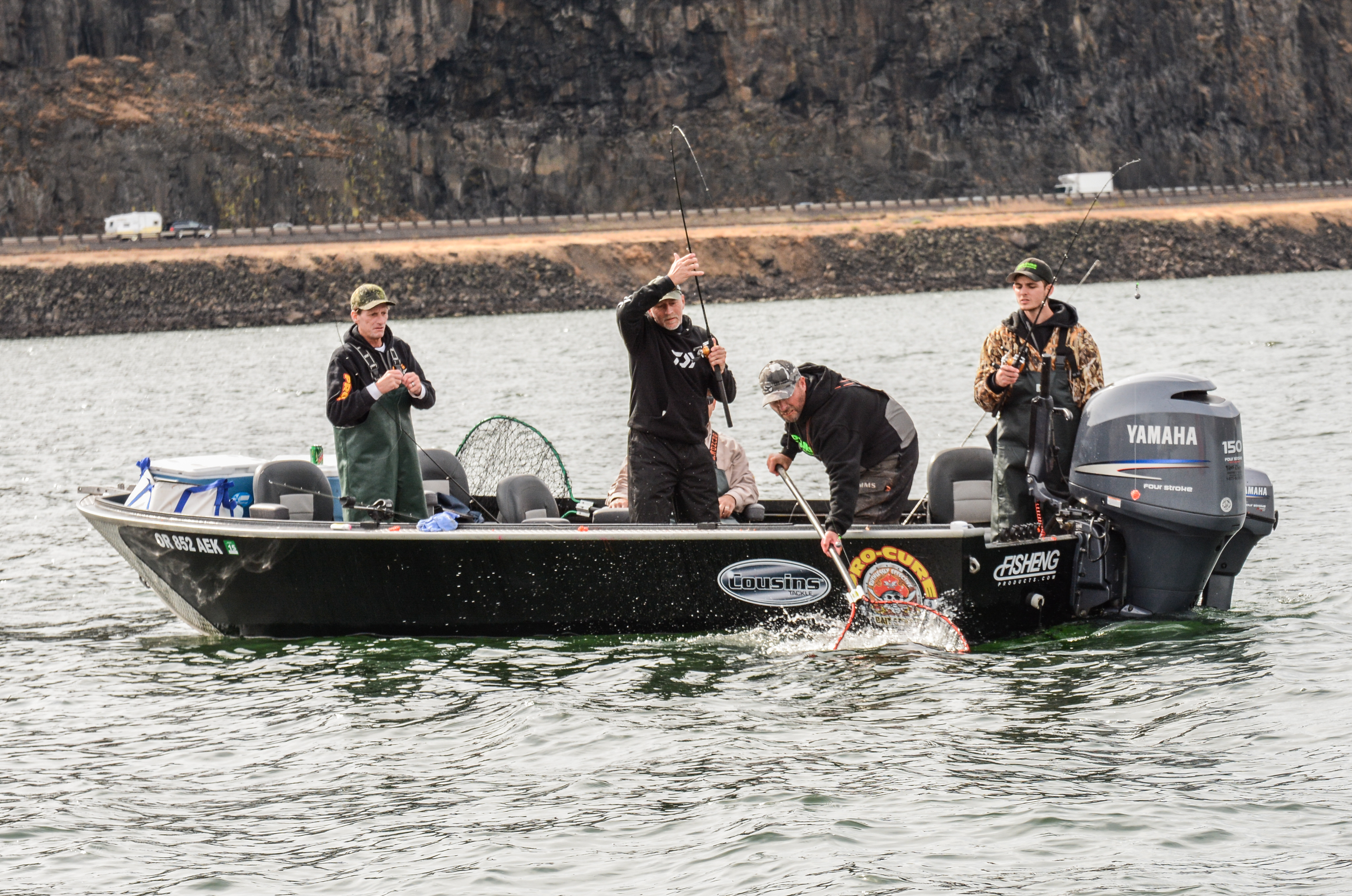Search
Latest Articles
Hover Fishing for Fall Salmon
by Jason Brooks, August 09, 2020
Hover fishing is a technique that is utilized when you find a pod of salmon resting at certain locations such as in the Columbia River near the mouths of the many tributaries emptying colder water into the warm river. Other places are in deep holes and slots where the fish are “stacked up”. The idea is simple, hover over the fish and offer an enticing bait and wait for the bite. But there are several small subtleties that add up and can make this a very frustrating or rewarding way to fish.
I learned how to hover fish from one of the salmon angling pioneers, Herb Good, who lives in Hood River, Oregon. Herb has been hover fishing for fall Chinook before I was even born, and I am in my mid-forties. A few of his tips made all the difference when he headed back to the dock with thirteen salmon in the boat after only fishing for four hours while others spent the entire day on the water with little to show for it.
Finding the fish is key. A good sonar unit where you can zoom in on the bottom of the river makes a big difference. Look for fish that are resting on or near the bottom, preferably grouped together. Once you find the fish you need a way to stay in one place without dropping an anchor. If you hover fish near the mouth of the Klickitat, White Salmon, or Deschutes then you will notice that many of the boats get in line and slowly drift downriver, keeping their baits near the bottom. Herb only does this until he finds that pod of fish, then he uses his kicker motor to stay put as the other boats float by him. Stay on top of the fish to catch more fish, that only makes sense. For small rivers this might mean using an electric motor or someone on the oars of the drift boat to keep it steady. The longer you can hover over the fish the more likely you will get bit.
When fishing this technique you will often have more than one angler get bit at once. This is because you are staying in one place and the fish are constantly having baits in their face. When one person hooks a fish encourage others to keep fishing. The bite is very subtle and often the fish is just opening its mouth and allowing the bait inside where it will suck on the eggs. A hard hookset drives the hook into the roof of the mouth of the fish but you will miss more bites than you hook because it is so soft.
Next is the gear, as it must be precise. A small, size 2 hook with a thumbnail sized bait of freshly cured roe, and maybe a few additives such as a sand shrimp tail or some shrimp oil. The leader must be stiff so the hook hangs below the weight. Oftentimes a twenty-four-inch leader of twenty-five-pound test is used because one to two cranks on the reel handle brings in the twenty-four inches of mainline. A 2-ounce cannonball weight on a slider allows you to drop the bait down to the bottom and then crank up just enough to have the bait a few inches from the mud. Salmon lay along the bottom of the river and as the bait bumps them on their nose they often times will just open their mouth and such on the baits. This is where a short rod, around 7 ½ to 8 feet with a soft or extra-fast tip and a strong action allows you to hook more fish.
Bait is key to getting bit. A few years ago while fishing with Steve Lynch and Jason Hambly of Pro-Cure they told me about Monster Bite. This is a bait additive that is a bite stimulant. First developed by a commercial hatchery to get fish hungry and on a regular feeding schedule Monster Bite came about when Pro-Cure began using it while on exploratory fishing trips. It didn’t take long to figure out that it really does create a bite. Steve explained, in simple terms, that it is like fresh baked cookies, no matter how full you are they are hard to turn down. Monster Bite stimulates the fish into eating and this was how the hatchery was able to over feed the fish to make them grow large quicker. I cured up a few skeins of chinook roe with Pro-Cure’s Last Supper tidewater cure and added a small amount of Monster Bite and another batch of regular cured eggs. The ones with the Monster Bite were constantly getting bit over the other eggs. Sometimes fish want shrimp, tuna, krill, garlic, or other scents so it is always good to cure up a few different kinds to see what they want. You can also add scents to standard cured eggs, either by letting the eggs soak in water based oils such as Pro-Cure’s Sardine, Herring, or Anchovy water soluble fish oils and the eggs will absorb them throughout the day. Another option is to use “sticky” scents such as Super Gels and put them on the baits just before you fish them. A good soft milking egg will always out fish old, hard, and over cured, or “burned” eggs.
When hover fishing, keep the tip of the rod six inches from the water, and if it dips down, almost touching the surface, lift the rod swiftly to set the small hook. The bite is often very soft and the combination of the stout leader, sharp and small hook, along with the extra-fast tip to a heavy action rod makes it so you can see the bite, set the hook, and land the fish. Most anglers spool a level wind reel with fifty-pound braid. You do not want any stretch in your mainline as it will hinder the hookset.
Hover fishing is pretty easy once you learn how to do it. The biggest challenge is staying over the fish and learning the light bite. Once you start fishing this technique it is hard to try anything else, and when it comes to resting fish there is no need to. Hover fishing is addicting, fun, and productive when the conditions are right.
Jason Brooks is an outdoor writer based in Washington and the Editor of The Tailout, an online magazine dedicated to all things Salmon & Steelhead related.


